More than just a boundary!
For National Hedgerow week, we went to look at a hedge at Low Bridge End Farm (St. John's in the Vale) that has expanded into a thriving patch of land producing fruit, Christmas trees, nuts and shelter for livestock. A fantastic example of what can be achieved with 0.07 hectares, a hedge and some imagination.
How did it start?
It started as a roadside fence, the area also included a mature oak tree around which a hedge was planted, under a National Park scheme in the 1990’s. At this point, they also agreed to move the fence down the hill to fit a few more trees in which also made it easier to get the fence installed.
The hedge was primarily blackthorn, hawthorn and an oak standard, which has unfortunately been cut along with the hedge so has poor form. Lessons to be learned there! After this was all planted there was still space for more so further planting included a walnut, elder, four apple trees and a plum tree.
There was still some more space so they put in a dozen or so ash trees along with some other mixed broadleaf, and a few hundred Christmas trees. Historically the farm used to sell Christmas trees by the wagonload from another woodland on the farm and had a few returning customers who would come along annually for a tree. Then just to add even more to the productivity, an area of blackcurrants was planted, with a couple of gooseberry bushes.
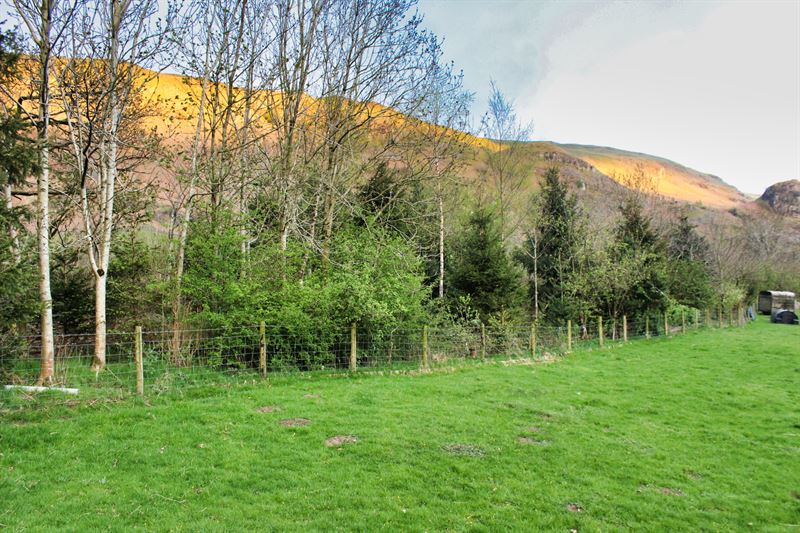
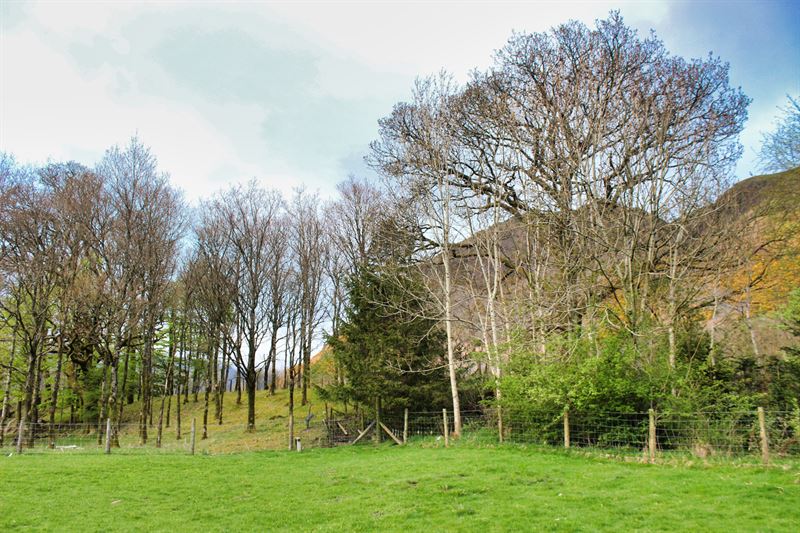
Getting Established
Once established the Fruit harvesting started about 2000-2005, with blackcurrants and apples first on the cards. Since then, walnuts, pears and plums have been harvested too. Hens, ducks and sometimes geese were put in around this time so the land is, in effect, grazed with the birds being good for pest control and fallen fruit being consumed too.
Around 2000 onwards, the first Christmas trees were ready to sell and then every few years a few more would be planted to replace what was cut.
In 2012, several dozen fruit and nut trees were planted, mainly damson but also more walnut, hazel and crab apple. These have yet to fruit but are now well established, this could perhaps be due to a choice of planting just whips rather than specific fruit trees. Since then, a further three plum trees and three apple trees have also been planted.
The tree species present now include oak, ash, sycamore, birch, holly, Norway spruce, lodgepole pine, fraser fir, noble fir, Nordman fir, elder, hawthorn, and blackthorn.
Fruit trees include plums, damsons, walnuts, apples, pear and crab apple. Not all the trees fruit. Some were bought as fruiting trees, others as whips and generally it is the former that yield. The investment in a specific fruit tree has given a better yield. Also, this may be partly due to the lack of pollinating partners. Some species require a mate to pollenate and this often needs more attention at the stage of planting to ensure matching species are selected.
The land is now quite scrubby, with blackthorn now coming down from the hedge, this was managed for a while but it is of no real detriment to the land as a whole.
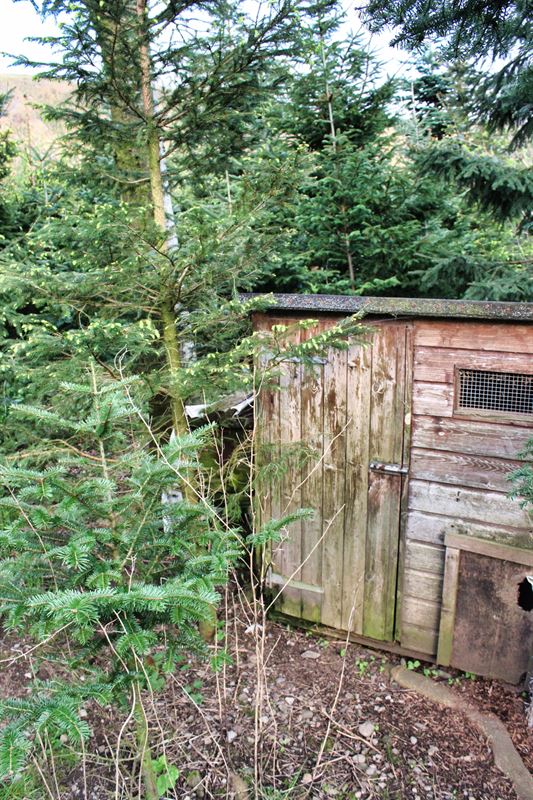
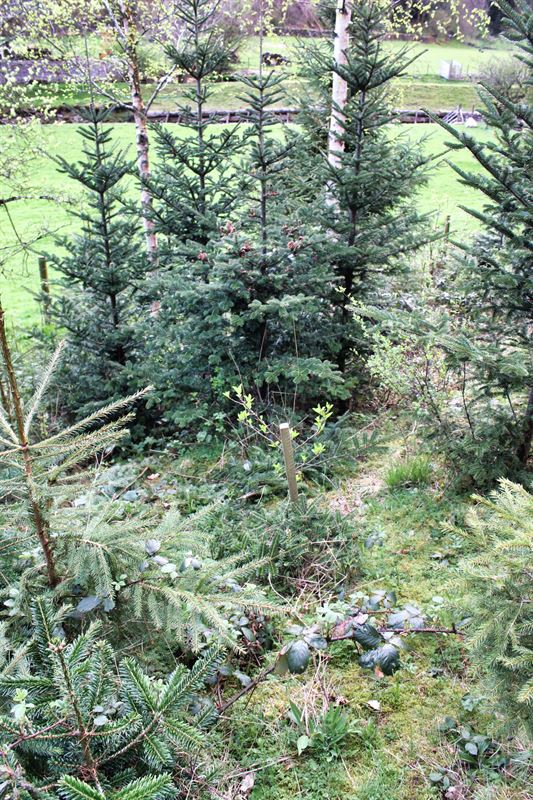
How much is produced?
In all, in a good year, they pick around 50-100 kilos of fruit. This mainly goes for home baking, jam and the freezer, so whilst not being a 'cash crop' is good food nonetheless. Bramble and raspberry and are also harvested most years.
The walnut produces around a hundred or so nuts on a good year, these are now edible from a 25 year old tree. It’s quite a lengthy investment in terms of timing but if scaled up it is easy to see how it could soon be very productive.
The pears "aren’t all that nice", the discovery apples are "delicious" and the plums when ripe are a "real treat". The blackcurrants "become boring" as they yield so well but do for juice, jam etc. but the eggs are great! They do supplementary feed the hens/ducks and so arguably the land primarily offers them a place to reside rather than sustaining them.
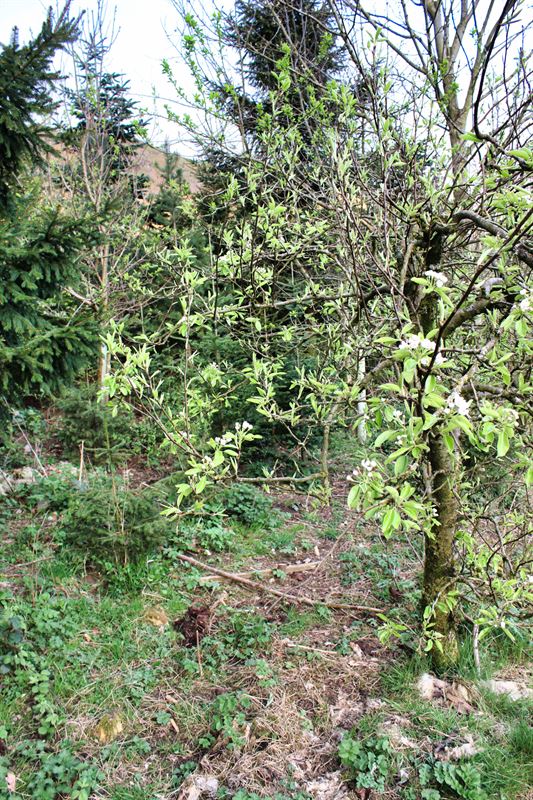
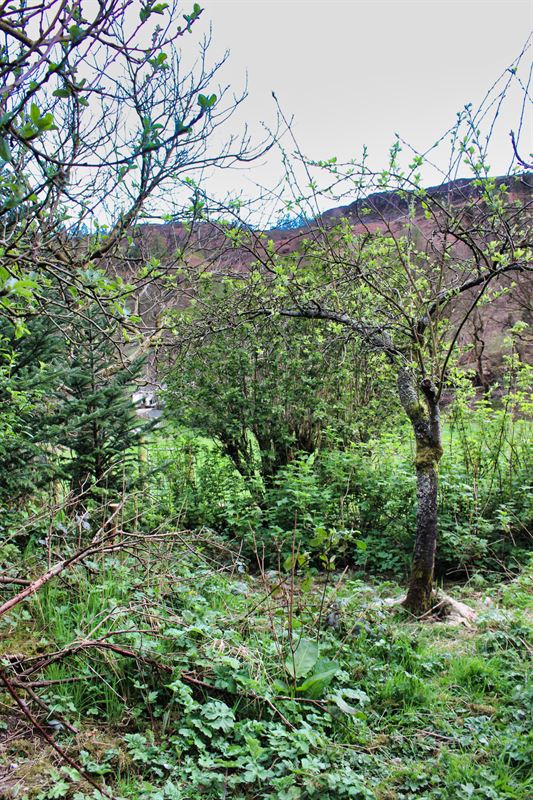
How much effort is required?
In terms of maintenance, the hedge is stockproof. The fence posts were creosoted and are just coming to the end of their life. The wire is still good and so it may be a matter of replacing posts.
The trees were not pruned for the first 15 years, then a fairly heavy prune meant a couple of years without fruit. In all the pruning has cost around 3 hours of labour in the lifetime of the orchard. Fruit picking is around 15 hours per year, on a good year.
What's the cost?
Over the 25 years, they estimate an investment of £605 plus the labour. This has led to an income of £3050 (which has come from the 15 years of productivity). This is from a site 0.07ha.
Thanks to Low Bridge End Farm for sharing their hedge story! www.campingbarn.com
Want to know more about funding for hedges? Our FREE woodland advisory service is the place to start CLICK HERE
Find out more about National Hedgerow Week here- www.NationalHedgerowWeek.org.uk
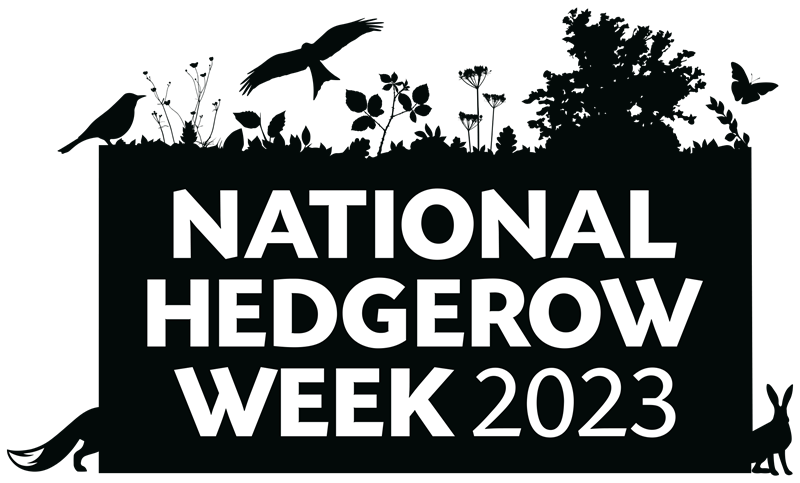
The Woodland Futures project is funded by the Trees Call to Action Fund. The fund was developed by Defra in partnership with the Forestry Commission and is being delivered by the Heritage Fund.